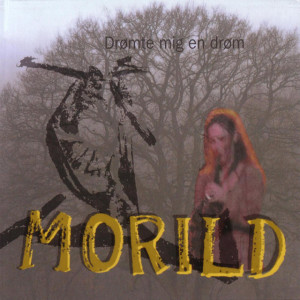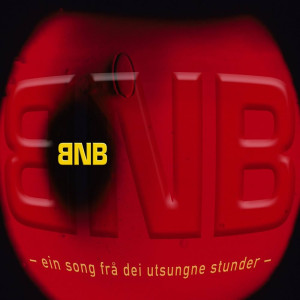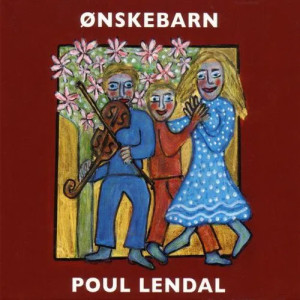 Jasmine Johnston contributed this review.
Jasmine Johnston contributed this review.
Life is about interruption. It’s about a lot of other things too, but at the tender age of twenty-six, I find myself moving from staid Victoria, BC, to sight unseen Dalian, China — an interruption of saga-scale-proportions. Just as an example of the logistics involved, Dalian is also know as Dalny, Dairen, Luda, Luta, Lushun and Port Arthur . . . Complicated. Fractured. Chaotic. That’s my life right now. But accompanying me along this piebald journey are a few rather interesting Norse jazz albums I’d like to introduce you to.
The first is Morild’s Dromte Mig En Drom. Morild, besides being a jazzy Danish group revisiting old folk songs, is a variety of bioluminescent plankton in the Norwegian Sea which blooms in the autumn. Some say it may lure sailors to death by drowning; others that the light emanates from the souls of the drowned who would lead sailors to heaven. Perfect for taking that leap into the unknown. Its cool, dreamlike melancholy was the ideal accompaniment to my process of dismantling my house and sorting through dunes and mounds of old bits. ‘Det er hvidt herude’ with gentle, classic jazz vocals in the soft yet slightly guttural Danish, and call-and-response percussion, for echoing across emptied rooms. ‘Jeg gik mig i lundun,’ atmospheric with its snare drum shuffle and solo saxophone following a minor snake-winding scale, for sorting old photos. ‘Bentes have,’ with a splunking, foghorn preface, plucked bass twangs, clattering percussion, and building saxophone for that frightening foray into the back of the kitchen cupboards in search of ancient bags of potato flour and experimentally canned pears from years ago. ‘Dromte Mig En Drom,’ (‘I dreamt a dream last night,’), with piercing saxophone rifts blending strangely with more traditional violin harmonies for that last sit on the roof, overlooking the city. ‘Spiren,’ with chuffing train-track percussion and hesitating saxophone for sorting books-to-take from books-to-leave. ‘Natten er sa stille,’ piano and saxophone in perfect accord, Danmark nu blunder den lyse nat,’ predominantly vocal and quietly harmonic, and ‘Fragment af, Det er hvidt herude,’ a brooding keyboard reprise of track one, for soothing moments in the summer heat. ‘Irmelin rose,’ with its driving beat and ballad-like vocals is probably my favourite. And ‘Resume jam’ is an oddly satisfying way to end a saxophone heavy album; like a cubist portrait, or alternatively the box of thrift-store detritus, its wandering, screaming saxophone and abstract beat provides a unique and unsettling perspective on the experience of moving through one’s personal  history. My major caveat for the album: you’d better really like saxophone and the schmaltzy end of the folk spectrum.
history. My major caveat for the album: you’d better really like saxophone and the schmaltzy end of the folk spectrum.
Next up on my journey, for the summer, was a double peregrination between Portland, Oregon — a city of bridges the colours of clouds, as Douglas Coupland writes — and a small, green, ferry-less Gulf Island in the Pacific Northwest Strait of Georgia. Homeless and divided: on the one hand, urbane chilled coconut juice, cheap graphic novels in droves, and for discount movies, a comfortable old theatre with garishly-coloured plaster medallions on the ceiling, squeaky rocking seats, and dirty velvet curtains, tended by two silent, pointy-chinned blond boys who were certainly either unseelie or Lost. (One of them had a fluffy, ash-silver goatee. The other sat with his thin legs curled up under him, behind the snack bar.) On the other hand, a tall-treed island shaped like a hand, fingers tapering into twisting, red-yellow-green arbutus woods carpeted with a-seasonal golden arbutus leaves and deep sphagnum moss, peopled mostly by sheep and small bats.
Astonishingly, BNB’s album Ein Song Fra Dei Utsunge Stunder proved to be the perfect aural medium as I traveled between those two places, and dwelt temporarily at one and the other. Improvisational jazz and traditional vocals combine to create something unique. Tracks one, two and three are one song, ‘Lite langre in,’ in three movements. The first part, a high, slow, haunting solo vocal preface, with strong, grounding double bass line. The second, a continuation of a traditional sung narration, the bass line getting more jazzy, with the addition of a fiddle playing off the bass. The final part is a dramatic continuation of the traditional and jazz themes, with a melancholy, wavering finish. ‘Paulista’ is an improvisational, calming wander of double bass and fiddle. ‘(Frekki)dvale,’ ‘Dan fagraste viso pao jorae,’ and ‘Et mine dypt’ are more structured, with clear, smooth vocals and expressive double bass. ‘Erindring’ is a traditional-sounding solo violin piece, measured and beautiful. ‘Ser due eit hjarte langs vinden’ is a hesitating violin and voice conversation. ‘Galgea’ is a frowning atmospheric double bass solo, both riff and independent voice. ‘Fivreld’ is a mournful minor-key voice solo reminiscent of traditional Gregorian requiems; the song is mastered with an echo, which I usually hate, but in this song find fitting. ‘Runarvissa’ is similar, but the latter half is quietly accompanied by the double bass and a bass lute, a Renaissance instrument which mediates nicely between voice and bass. ‘Fantasea’ is a brief bass solo. ‘Sang tha elva,’ one of my favourites, is a ballad-style track with light accompaniment; the vocalic use of language shines here with a pure euphonic beauty. ‘Et segl glir bort,’ the final track, alternates fiddle and double bass with voice solos, show-casing, in a restrained sort of way, the total atmosphere of the album.
This album is weighty in mood, serene in tone, and inventive in theme. In musical terms, then, a monochromatic free-style fusion of slow grooves, modal melodies, and shimmering vocalic progressions. Caveat? It takes itself rather seriously. Still, I recommend it for quiet browses in large bookshops, as well as quiet bottles of homemade wine on the porch of an evening.
In one of the more vivid Norse sagas, the bloody-minded, long-lived protagonist Egil often speaks spontaneous, powerful poetry at key moments. He says in one passage,
‘List to the stream of lay
From long-haired Odin flowing,
Thane of a king, and bid
Thy folk due silence keep.
For thee, sea-raven’s ruler,
Rained from the eagle’s beak
Full oft shall shower of song
In Horda’s shore be heard.’
 And I’d like to echo him as I introduce Poul Lendal’s first solo album Ønskebarn. After a long career playing Danish folk music, the album is meant to represent ‘the old folk musician, alone in his kitchen, the traditional ball (dance) tunes recorded in the forest, the festival, and the possibilities of a studio for a traditional folk musician,’ as he puts it in a Global Village Idiot interview. The album evokes all these things.
And I’d like to echo him as I introduce Poul Lendal’s first solo album Ønskebarn. After a long career playing Danish folk music, the album is meant to represent ‘the old folk musician, alone in his kitchen, the traditional ball (dance) tunes recorded in the forest, the festival, and the possibilities of a studio for a traditional folk musician,’ as he puts it in a Global Village Idiot interview. The album evokes all these things.
In a lecture given by Benjamin Bagby, Beowulf scop, I learned that Norse folk music can include everything from renditions of the ‘Oh my darling Clementine’ tune to distinctive ‘rimur’ and the ‘hardingfele’ fiddle tradition.
Indeed. On Ønskebarn voice-only ballads move to the hurdy-gurdy or pipes, ‘rudl’ fiddle reels mixed with double bass solos to twanging ‘jaw’s harp.’ The album is a wild mix of mostly traditional but also some original tunes. I see myself listening to it repeatedly over the next while.
‘Poul sine hons,’ is a traditional voice-only ballad. ‘Danmarks aeldste polka,’ is an accordion and violin-driven dance piece which collates several different tunes and styles into one. ‘Ramasjang’ is another traditional tune featuring a melodeon and swinging, pub-worthy vocals.
‘O fader vise’ is one of my favourite tracks. Its strictly vocal delivery is perfect, with gorgeous, spare fifth harmonies: as Bagby writes, ‘where two singers [of Norse folk] declaim the same text, different versions of the modal gestures may sometimes be heard simultaneously, resulting in a kind of heterophonic texture (verging on improvised polyphony).’ Apparently the words are a mare’s tale of Old Swedish, Latin and mouth music — the effect is certainly soothingly nonsensical, like a nursery rhyme or perhaps a pythian lullaby.
‘Silke’ starts with bells and involves willows, flutes and a bass dulcimer. Its fibrillation between major and minor keys generates a faintly eastern feel. ‘Alfreds lille mazurka’ is an old violin tune, perfect for waltzing to all on one’s own. ‘Rosensfole’ is another of my favourite pieces, new folk composed by Lendal, involving the hurdy-gurdy, jaw’s harp and electric guitar; the skirly-piping, somewhat Scottish melody is picked up by the electric guitar, strong but not overwhelming, and it’s a great addition to the more traditional tracks, sounding a bit like the Sidh raving of a gloaming. ‘Suomi’ is a bells-grounded Estonian folk tune. ‘Trekanter’ is a piano and violin folk tune done in three movements. ‘Voss rudl Nr. 3’ is a dance tune (a rudl being a type of Norwegian dance) composed by Lendal, with a stand-up bass to open and Lendal’s deft and lovely violin, as well as humle and dulcimer, in the middle and to end, punctuated by an ever-changing tempo theme and variation with electronica/base. ‘Raevens vals’ is a live violin, piano and accordion waltz which, contrary to its name, doesn’t do much to evoke ravens for me, but is nonetheless enjoyable with its alternating violin and accordion voices. ‘Far er hjemme’ is full of spoons, melodeon, and wonderful bagpipes, with women vocals that remind me of Varttina on a happy day. ‘Pouls diament’ is a pensive composition by Torben Sminge, with a strong piano voice and lovely accompanying hurdy-gurdy, horn and double-bass. ‘Kirken den er et gammult hus’ is unusual in that the only instruments are the hurdy-gurdy and a ‘petrol-can,’ i.e. oildrum. The tune is original, and another of my favourites for its strong, percussive string-and-pipe drone. ‘Kaerlighedstraet’ is a brass-heavy folk arrangement, which sounds as though it ought to accompany the investigations of a slightly inept detective. Track sixteen, also called ‘Kaerlighedstraet,’ is a variation on the opening to this tune, rendered by violin, electric guitar, organ and bagpipe. ‘Ingles polska’ composed by Poul Lendal and Morten Alfred Hoirup, is a joyful sort of guitar and violin ‘conversation’ about death and life, expressing this interchange with a series of resolutions between major and minor variations on the tune. ‘Kaededanse’ is a riddle of three circle-dance tunes, the first two from Faroe and the last from Asturias, Spain. Drums and mora-harp mix the tunes in a cadenced delivery of the traditional score, which, as it progresses, speeds up, mora-harp at the front and the sound of voices cheering in the back. ‘Knagstykker’ is an arrangement of two piano and accordion dominant polkas, which are, as polkas go, very jolly and a bit too long, with a self-ironic flourish between tunes to show Lendal knows that to be the case! ‘Flattskuttan’ is a twangy jaws harp and keyed fiddle tune, stripped down to allow for the full sound of these homespun, fascinating instruments. ‘Rosensfole’ composed by Lendal, involves the march of hurdy-gurdy, bass dulcimer and light percussion through a tightly composed series of repetitions and variations on the melody. Finally, the last track, entitled like the first ‘Poul sine hons,’ involves a long jaw’s harp solo, in which the full range of its rhythm-tones are exhibited — pure fun, I imagine, for the ‘old folk musician.’
All the tunes are quite short and mostly instrumental, which makes it easier to enjoy the entertaining, wildly diverse mecum of sound as individual gems. The liner notes at the end contain a blessedly useful and interesting English blurb for each track. The album is accomplished and diverse, and I have no caveats whatsoever: in fact, go ye and buy this frolic of an education.
Of all three albums in this omni, this is the one I imagine finally climbing on the plane with and tuning out to on that long, droning arc across the Pacific to Japan and then China. I think it’ll stand the test of close re-examination, and will go surprisingly well with lychee nuts and green tea and Gobi desert winds.
(Go! Danish Music Production, 2005)
(Lindberg Lyd, 2005)
(Go! Danish Music Production, 2005)
